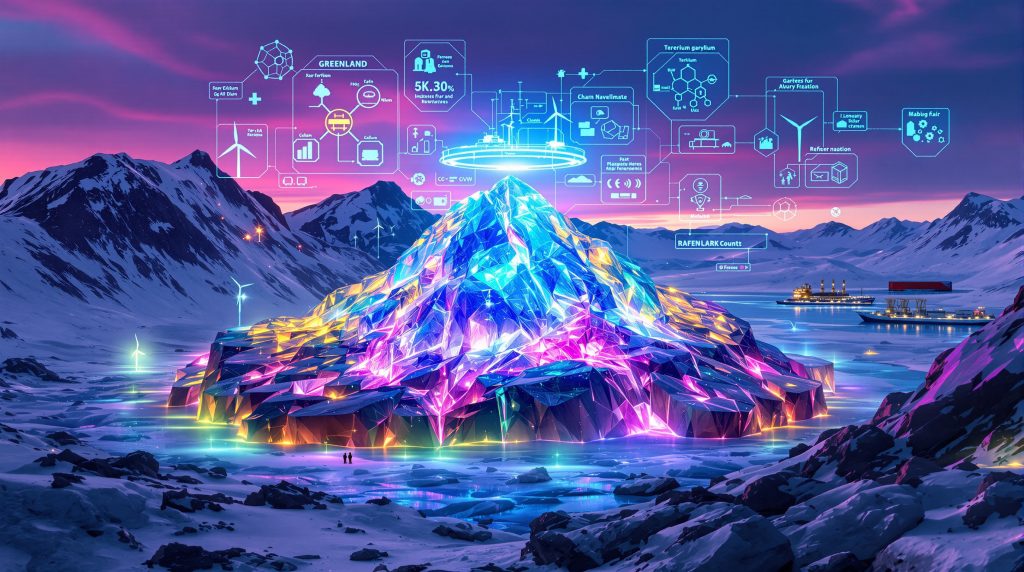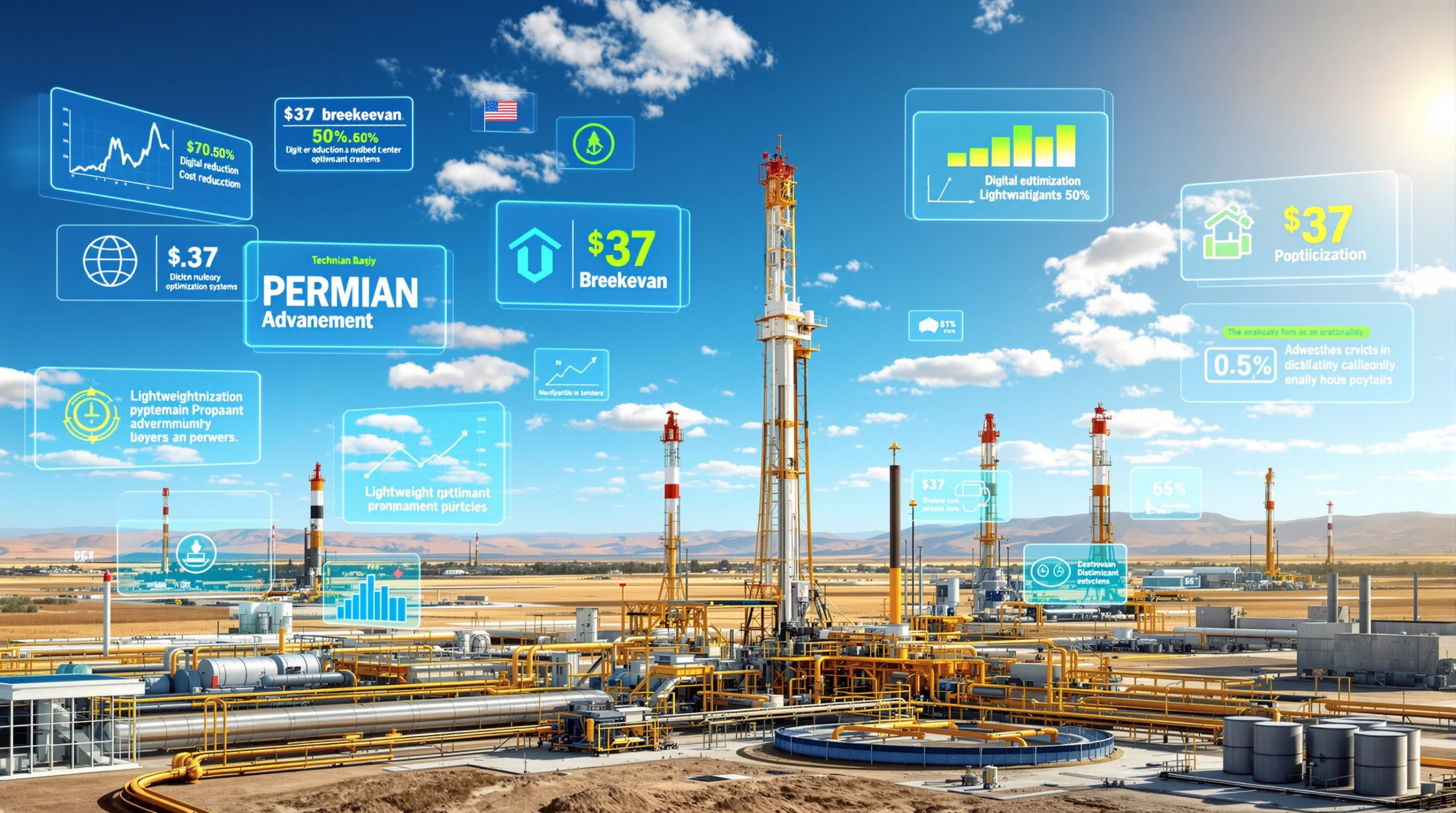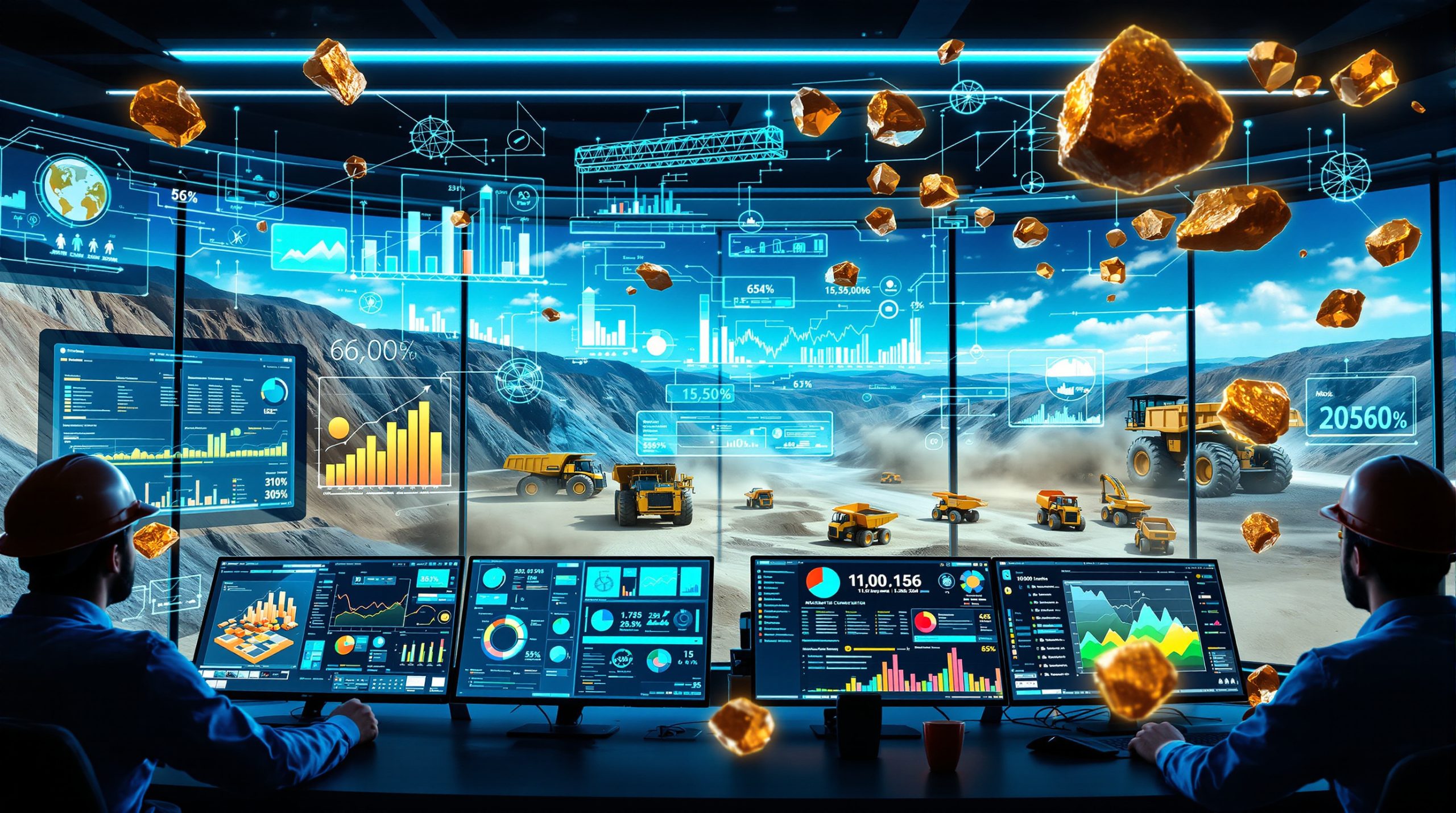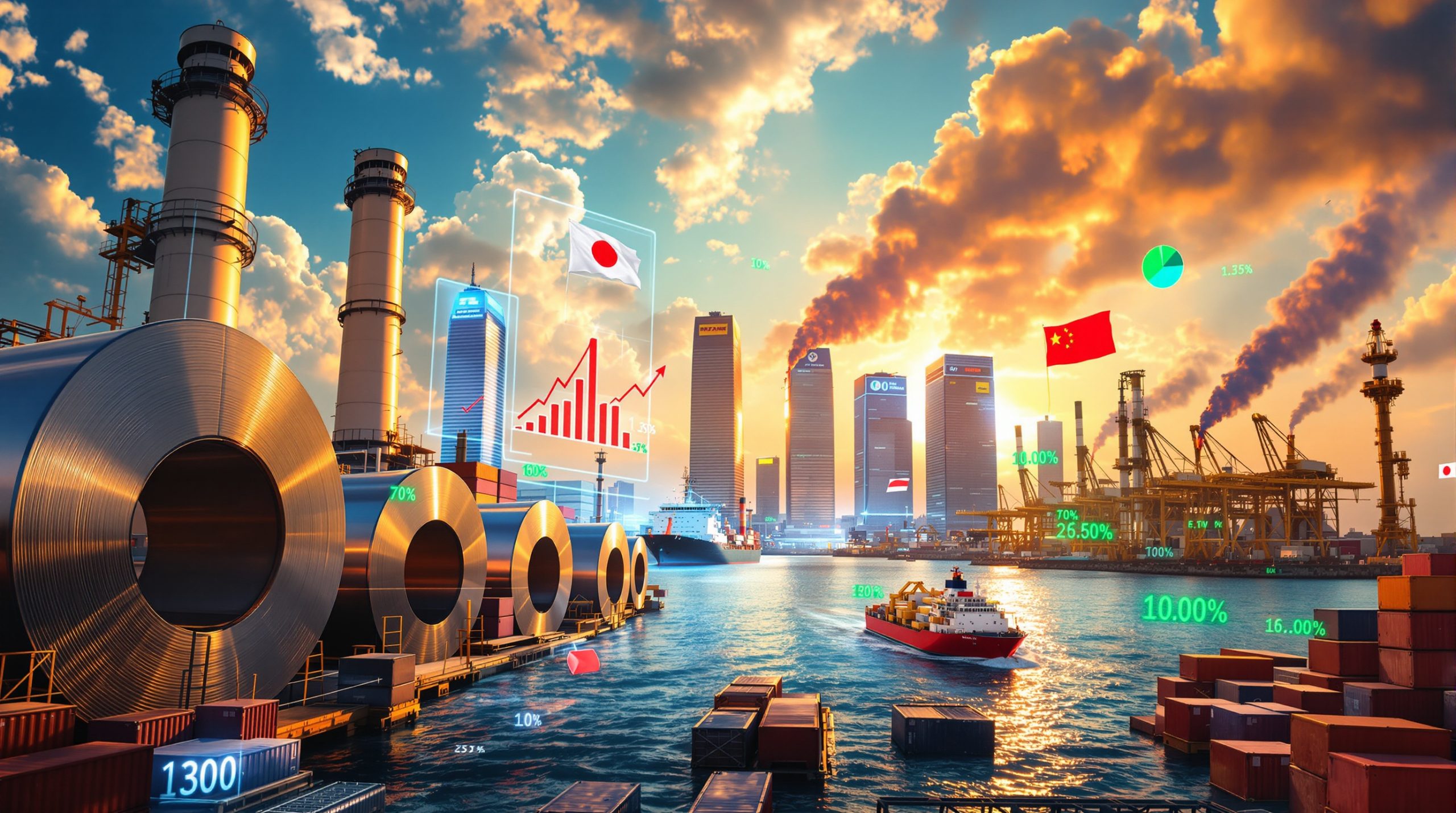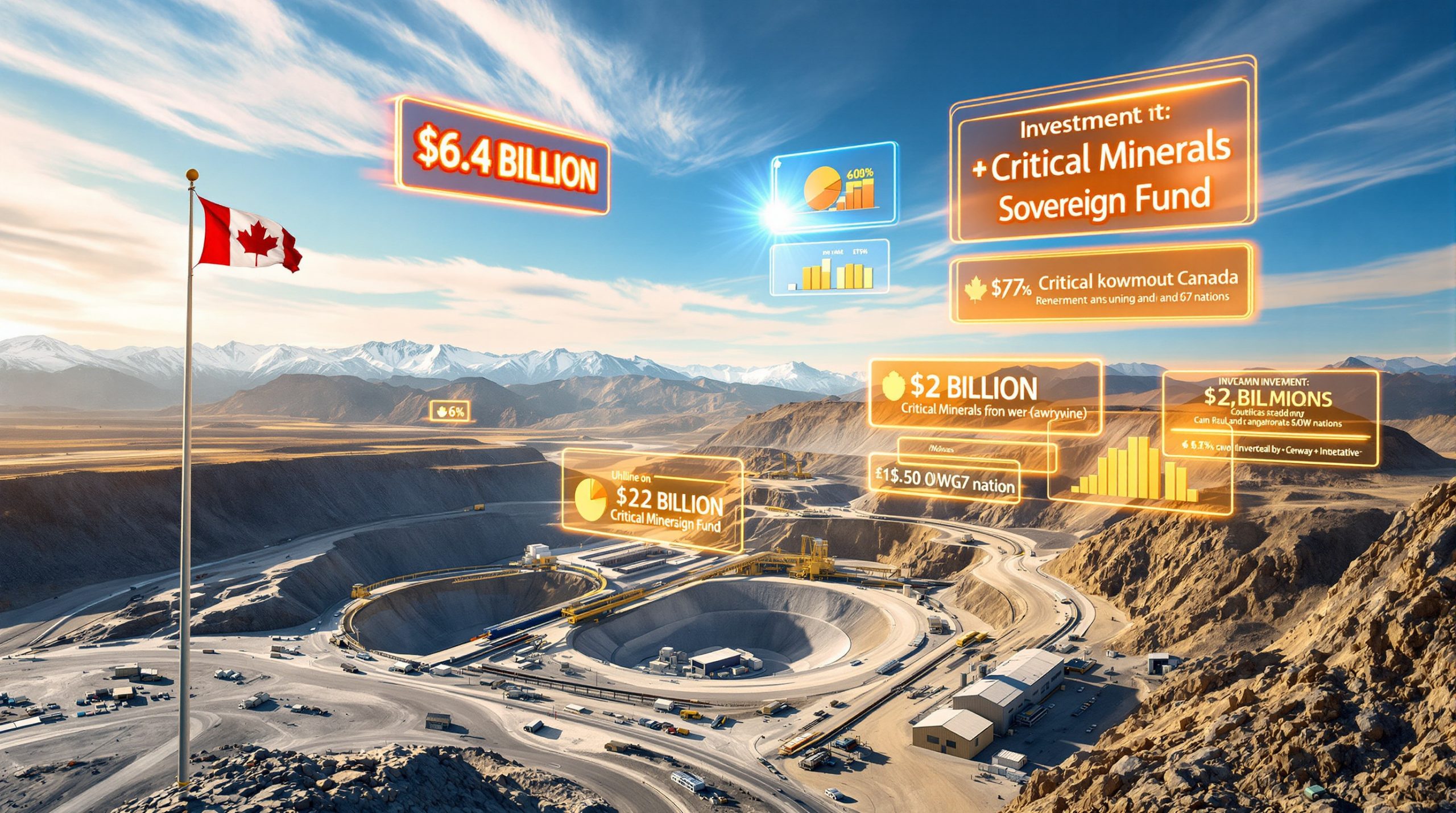What Makes Greenland's Rare Earth Elements Projects Significant?
Greenland has become a focal point in the global race for rare earth elements (REEs), representing a critical opportunity for Western nations seeking alternatives to China's dominance in the REE supply chain. The territory's unique geological formation has created exceptional concentrations of these strategic metals that are vital for advanced technologies, green energy systems, and defense applications.
According to the U.S. Geological Survey's 2024 Mineral Commodity Summaries, China currently controls approximately 80-85% of global rare earth processing capacity. This concentration of supply creates significant vulnerabilities for Western economies and defense sectors that depend on these materials for critical applications.
The European Union and United States have both recognized this vulnerability, with the EU's Critical Raw Materials Act (2023) and the U.S. Department of Energy's Critical Materials Strategy specifically identifying rare earth elements as essential for energy transition and national security.
The Strategic Value of Greenland's REE Deposits
Greenland's unique geological history has created conditions favorable for the formation of rare earth deposits with unusually high concentrations of the most valuable heavy rare earth elements (HREEs). These elements, including terbium, dysprosium, and yttrium, are particularly critical for permanent magnets used in wind turbines, electric vehicles, and defense systems.
The strategic location of Greenland, with access to shipping routes to both North America and Europe, adds to the territory's importance in diversifying global REE supply chains. As both continents seek to reduce dependency on Chinese rare earth sources, Greenland's deposits offer a geopolitically favorable alternative.
Heavy rare earth elements typically constitute less than 10% of most REE deposits outside China, making deposits with higher HREE concentrations particularly valuable. The strategic value of these resources has attracted significant attention from government agencies and defense contractors seeking secure supply chains for critical minerals reserve.
How Does the Tanbreez Project Stand Out Among Global REE Developments?
The Tanbreez project in southern Greenland represents one of the most advanced rare earth developments outside of China. Located in the Ilimaussaq Complex in southwestern Greenland, the project benefits from excellent access to shipping routes, facilitating potential export to North American and European markets.
What makes Tanbreez particularly notable is its unusually high concentration of heavy rare earth elements compared to most non-Chinese deposits. While typical non-Chinese deposits contain less than 10% heavy rare earths, the Tanbreez project claims significantly higher percentages, though specific figures require verification through official technical reports.
Geological Advantages of Tanbreez
The geological characteristics of the Tanbreez deposit provide several potential advantages over other global REE projects. The deposit is located within the Ilimaussaq alkaline complex, one of the most REE-enriched geological formations on Earth.
One key advantage is the reportedly lower levels of radioactive elements compared to some other Greenlandic deposits. This is particularly significant given Greenland's 2021 uranium mining ban, which has affected the advancement of projects with higher radioactive content.
The deposit's mineralogy potentially allows for more straightforward processing than some other REE deposits, which often require complex, multi-stage extraction processes. However, specific details about the processing methodology would need to be verified through technical studies and engineering reports.
The resource size reportedly supports a multi-decade production timeline, though official resource estimates would need verification through qualified persons under recognized reporting codes such as JORC or NI 43-101.
What Recent Developments Are Accelerating the Tanbreez Project?
Recent developments have potentially accelerated the timeline for the Tanbreez project, with several key milestones advancing the project toward development. These include progress on technical studies and potential processing partnerships.
Key Partnership for Processing
Securing processing partnerships represents a critical milestone for any rare earth project, as processing capacity outside China remains extremely limited. The Tanbreez project has reportedly secured a processing agreement that could provide a pathway for processing without dependency on Chinese facilities.
Such partnerships are crucial given the complex metallurgical challenges associated with rare earth extraction and separation. The limited global capacity for rare earth processing outside China makes these partnerships particularly valuable for emerging projects.
Advancing Technical Studies and Permitting
The project is reportedly progressing through technical development stages, building upon previous feasibility work. Technical studies for mining projects typically include resource definition, metallurgical testing, process design, infrastructure planning, and environmental impact assessments.
For Arctic mining projects, these studies must account for unique challenges including extreme weather conditions, limited operational seasons, permafrost considerations, and specialized infrastructure requirements. The Arctic Council's Environmental Guidelines (2019) highlight the additional complexity of developing mining projects in these remote and sensitive environments.
A drilling program has reportedly been completed to further define the resource, with metallurgical testing underway to optimize recovery of various rare earth elements. Infrastructure planning includes considerations for access roads to reduce helicopter dependency, a common challenge for remote Arctic projects.
What Makes Tanbreez's Rare Earth Profile Particularly Valuable?
High-Value Heavy Rare Earth Elements
The potential value of the Tanbreez project lies in its reported concentration of heavy rare earth elements that command premium pricing and face critical supply constraints. These elements have specific applications in high-technology and defense industries that make them strategically important.
Among the most valuable elements potentially present in the Tanbreez deposit are:
Gallium: Essential for semiconductors, 5G infrastructure, and military radar systems. The U.S. Department of Commerce (2022) identified gallium as a critical material for national security and economic prosperity. Global gallium production was approximately 350 metric tons in 2023 according to USGS data.
Hafnium: Used in nuclear control rods, superalloys, and plasma cutting tools. The USGS Mineral Commodity Summary (2024) identifies hafnium as essential for aerospace and defense applications.
Terbium: Critical for permanent magnets, solid-state devices, and naval sonar systems. The European Commission's Critical Raw Materials List (2023) identifies terbium as one of the most supply-constrained rare earth elements.
Niobium: Used in superalloys, superconductors, and particle accelerators. Strategic for aerospace applications and advanced manufacturing.
Military and Advanced Technology Applications
The heavy rare earth elements potentially found at Tanbreez have particular importance for defense and advanced technology applications:
- Next-generation weapons systems including precision-guided munitions
- Advanced radar and sonar systems for military applications
- Electric vehicle motors requiring high-performance permanent magnets
- Wind turbine generators using rare earth permanent magnets
- Communications infrastructure including 5G networks
- Satellites and space technology components
The U.S. Department of Defense has identified secure supplies of these materials as essential for national security, driving interest in non-Chinese sources of heavy rare earths.
How Does Tanbreez Compare to Other Greenlandic REE Projects?
Comparative Analysis of Major Greenlandic REE Projects
Greenland hosts several significant rare earth deposits, each with distinct characteristics and development challenges. The most notable include:
Kvanefjeld Project: Developed by Energy Transition Minerals (formerly Greenland Minerals), this project contains an estimated 6.8 million tons of rare earth oxides according to published reports. However, its development has been stalled due to Greenland's 2021 uranium mining halt example, as the deposit contains significant uranium content. The Greenlandic Parliament's decision in 2021 to ban uranium mining has created substantial regulatory challenges for this project.
Sarfartoq: Currently in early-stage exploration, this project faces similar challenges related to potential radioactive element content and infrastructure development in remote Arctic conditions.
The Tanbreez project reportedly benefits from lower radioactive element content compared to Kvanefjeld, potentially simplifying its regulatory pathway under Greenland's current mining regulations.
Regulatory and Political Landscape
The development of rare earth projects in Greenland operates within a complex regulatory and political environment:
Greenland implemented a ban on uranium mining in 2021, significantly affecting projects with uranium or thorium content. This decision reflects both environmental concerns and complex political dynamics surrounding radioactive materials.
Projects must navigate the balance between economic development interests and environmental protection in Greenland's sensitive Arctic ecosystem. The Arctic Council's 2019 environmental guidelines establish stringent standards for mining operations in Arctic regions.
There is increasing geopolitical interest from the United States and European Union in securing Greenlandic rare earth supply, as evidenced by the U.S.-Greenland Memorandum of Understanding on Mineral Resources (2020) and Denmark's Arctic Strategy 2024-2033, which emphasizes sustainable resource development.
What Financing and Support Mechanisms Are Available?
International Financing Initiatives
The development of strategic mineral projects like rare earth mines can potentially access specialized financing mechanisms designed to support critical mineral supply chains. These may include:
The CHIPS and Science Act (2022) includes provisions for developing non-Chinese rare earth supply chains, potentially creating funding opportunities for projects that advance U.S. supply security objectives.
Export credit agencies in multiple countries have established programs to support critical minerals projects. These agencies provide government-backed loans, guarantees, and insurance to facilitate international business transactions.
International financial institutions increasingly recognize the strategic importance of rare earth elements for the global energy transition, potentially creating new financing pathways for projects with strong environmental and social governance credentials.
Strategic Government Support
Various governments have implemented strategies to support rare earth element supply chain development:
The U.S. Department of Energy's Critical Materials Institute focuses on technologies to diversify supply, develop substitutes, and improve reuse and recycling of rare earth elements.
The European Union's Net-Zero Industry Act targets 40% of critical raw materials to be sourced from domestic or allied sources by 2030, creating policy support for European off-take from non-Chinese projects.
Denmark, as the sovereign power in Greenland, provides engineering and technical support for sustainable resource development through various programs and initiatives.
What Are the Environmental and Social Considerations?
Environmental Management Approach
Mining projects in Greenland face unique environmental challenges and must meet stringent standards:
Arctic mining operations contend with extreme conditions including permafrost, limited operational seasons, and sensitive ecosystems, as documented by the Arctic Council's Environmental Guidelines (2019).
Projects with lower radioactive element content face fewer regulatory hurdles under Greenland's uranium mining ban, potentially simplifying environmental permitting.
Sustainable mining practices must be adapted to Arctic conditions, with specialized approaches to waste management, water treatment, and land reclamation in extreme environments.
Environmental impact assessments for Arctic mining projects must consider factors including impacts on permafrost, potential acid rock drainage in freezing conditions, and effects on Arctic wildlife with limited breeding seasons.
Community Engagement and Economic Benefits
Rare earth projects in Greenland offer potential economic benefits while raising important social considerations:
Mining development presents opportunities for economic diversification in a territory currently dependent on fishing and Danish subsidies.
Job creation in remote communities provides employment opportunities, though skills development and training programs are essential to maximize local benefits.
Infrastructure improvements associated with mining industry evolution can benefit local communities, providing improved transportation and energy systems in remote areas.
Community concerns regarding environmental protection must be addressed through transparent engagement and benefit-sharing mechanisms that respect indigenous rights and traditional land use.
What Timeline Is Expected for Development and Production?
Key Milestones and Production Schedule
The development of rare earth projects typically follows a structured timeline, though Arctic conditions create additional challenges:
Bankable feasibility studies for mining projects typically require 12-24 months to complete, with additional time needed for financing, permitting, and construction.
Arctic construction seasons are severely limited by weather conditions, with temperatures reaching -40°C during winter months and extended periods of darkness limiting outdoor work.
According to the Arctic Council (2020), construction costs in Arctic regions can be 2-3 times higher than in temperate regions due to logistical challenges, specialized equipment requirements, and limited operational seasons.
Initial production at rare earth projects typically begins at reduced capacity, with phased expansion as operational experience is gained and processing optimization occurs.
Technical Development Roadmap
Several technical workstreams must advance simultaneously to develop an Arctic rare earth project:
Metallurgical optimization studies are essential for rare earth projects, as recovery rates and separation efficiency dramatically impact project economics.
Processing technology selection must consider Arctic conditions, energy availability, and reagent transportation challenges in remote locations.
Infrastructure planning for Arctic projects requires specialized engineering to account for permafrost conditions, extreme temperature variations, and limited construction seasons.
Environmental monitoring systems must be designed for extreme conditions, with backup systems and redundancies to ensure year-round data collection despite harsh weather.
How Does Tanbreez Fit Into Global Rare Earth Supply Chains?
Strategic Position in Global Markets
The development of new rare earth sources outside China represents a potentially significant shift in global supply dynamics:
According to USGS data (2024), the United States imported 100% of its rare earth compounds and metals in 2023, primarily from China, highlighting the strategic value of new Western-allied sources.
Global rare earth element production was approximately 300,000 metric tons in 2023 (USGS, 2024), with China dominating both production and processing capacity.
New production from Greenland could potentially help address supply constraints for critical heavy rare earths used in defense applications and green energy technologies.
Supply chain security concerns have intensified following export restrictions implemented by China on gallium and other critical materials in 2023, increasing interest in non-Chinese sources.
Potential End Users and Applications
Rare earth elements from Greenland could serve multiple critical industries:
Defense contractors require secure supplies of heavy rare earths for advanced weapons systems, radar technology, and guidance systems.
Electric vehicle manufacturers face increasing demand for permanent magnet motors containing dysprosium and terbium, with production expected to grow significantly through 2030.
Renewable energy equipment manufacturers require rare earth magnets for wind turbines and other green energy technologies, with demand projected to increase as global decarbonization efforts accelerate.
Electronics and semiconductor manufacturers depend on gallium, hafnium, and other rare earths for advanced components in communications systems, medical devices, and consumer electronics.
What Are the Challenges and Risk Factors?
Technical and Operational Challenges
Despite its potential advantages, rare earth development in Greenland faces several significant challenges:
Arctic operating conditions create extreme challenges, with temperatures reaching -40°C and extended periods of darkness during winter months limiting operational seasons.
According to the Arctic Council (2019), mining in Arctic conditions requires specialized equipment, infrastructure, and operational protocols to manage extreme cold, permafrost, and remote logistics.
Limited infrastructure in Greenland necessitates significant capital investment in roads, ports, power generation, and accommodation facilities before mining can commence.
Complex metallurgical processing requirements for rare earth separation and refining demand specialized expertise and technology not widely available outside China.
Workforce recruitment and retention in remote Arctic locations presents ongoing challenges, requiring premium compensation and rotation schedules to attract qualified personnel.
Market and Competitive Factors
The project must navigate evolving market conditions in the rare earth sector:
Rare earth prices have historically shown significant volatility, with individual element prices sometimes fluctuating by more than 100% in a single year.
Competition from other emerging rare earth projects globally creates uncertainty regarding future supply-demand balance and pricing dynamics.
Chinese market dominance gives it significant influence over global rare earth pricing and potentially the ability to respond strategically to new market entrants.
Evolving technology in batteries, motors, and other applications may affect demand patterns for specific rare earth elements over the project's lifespan.
Securing long-term offtake agreements is essential for project financing but challenging in a market characterized by limited transparency and few major buyers outside China.
What's Next for Greenland's Rare Earth Development?
Near-Term Catalysts and News Flow
Several developments could potentially advance Greenland's rare earth sector in the coming months:
Completion and publication of drilling results would provide updated information on resource quality and quantity, subject to verification through qualified persons under recognized reporting codes.
Finalization of technical studies including metallurgical test work and process design would advance understanding of the project's technical feasibility.
Potential additional partnerships with processing companies, technology providers, or end-users could establish clearer pathways to market for Greenlandic rare earths.
Engagement with government agencies in the U.S. and Europe regarding strategic material supply chain initiatives could create new support mechanisms for project development.
Long-Term Strategic Vision
The broader vision for Greenland's rare earth sector includes several ambitious goals:
Establishment as a major global supplier of heavy rare earths would diversify global supply chains and reduce dependency on Chinese sources.
Development of downstream processing capabilities could capture additional value beyond mining and initial concentration.
Integration into Western critical minerals supply chains would enhance geopolitical security for NATO allies and partners.
Contribution to Greenland's economic diversification would reduce dependency on fishing and Danish subsidies while creating new employment opportunities.
Supporting global decarbonization efforts through the supply of materials essential for renewable energy and electric vehicle technologies.
FAQ: Greenland's Rare Earth Elements Project
How do Greenland's rare earth deposits compare to those in other countries?
Greenland's deposits are distinguished by their reported concentration of heavy rare earth elements, which are typically more valuable and in shorter supply than light rare earths. The territory's geological history has created conditions favorable for rare earth mineralization, with several significant deposits identified. The strategic location with access to shipping routes to Europe and North America adds logistical advantages compared to some other global deposits.
What are the most valuable rare earth elements found in Greenland?
The most valuable elements potentially include gallium, hafnium, terbium, and niobium. These elements are critical for advanced technologies including semiconductors, permanent magnets, defense systems, and aerospace applications. Their value derives from both their relative scarcity and their essential role in technologies with few or no substitutes.
How does Greenland's uranium mining ban affect rare earth development?
The 2021 uranium mining ban implemented by the Greenlandic Parliament primarily affects projects with significant uranium or thorium content, such as the Kvanefjeld project. Projects with lower levels of radioactive elements face fewer regulatory hurdles under this legislation. The ban reflects both environmental concerns and complex political considerations regarding radioactive materials in Greenland.
What role could Greenland play in reducing dependency on Chinese rare earth supply?
If successfully developed, Greenlandic rare earth projects could provide an alternative source of heavy rare earths that are currently almost exclusively processed in China. This would potentially enhance supply security for Western nations and their industries, particularly for critical applications in defense and green energy technologies.
What timeline is realistic for Greenland to become a major rare earth supplier?
Development of new mining projects, particularly in Arctic conditions, typically requires 5-10 years from advanced exploration to production. Considering the requirements for feasibility studies, permitting, financing, construction, and commissioning in challenging Arctic conditions, Greenland could potentially emerge as a significant supplier in the late 2020s, assuming successful project execution.
Ready to Track the Next Major ASX Mineral Discovery?
Discovery Alert's proprietary Discovery IQ model instantly notifies investors of significant mineral discoveries on the ASX, transforming complex data into actionable insights for both short-term traders and long-term investors. Visit our discoveries page to understand how historic mineral discoveries have generated substantial returns, and begin your 30-day free trial today.
